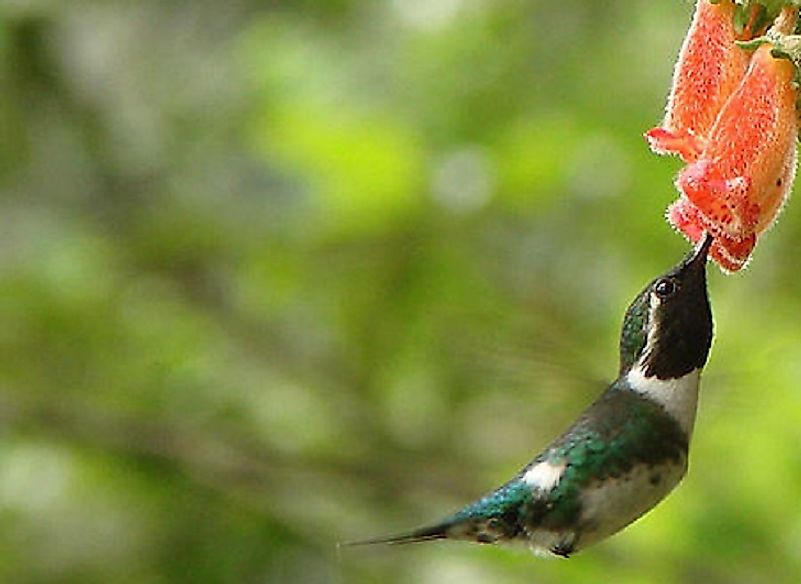Native Birds Of Ecuador

The avian richness of Ecuador accounts for over 1,6000 species. including the many birds inhabiting the Galapagos Islands. Of these bird species, 44 are endemic to Ecuador, while two species have been introduced. 19 species of birds in the country are accidental while 79 species are globally threatened. The continental species are over 1600 from which seven are endemic and unique to the country. Ecuador world’s fourth in avian richness after Colombia, Brazil, and Peru. The diverse weather and the complexity of the country’s geography are the contributing factors to several habitats that support the bird diversity. The endemic birds of Ecuador are found in the areas of Choco Lowlands, Montane Choco, and Tumbesian Lowlands. Some of these native birds of Ecuador are looked at below.
Galapagos Penguin
The Galapagos penguin, Spheniscus mendiculus, is a penguin species endemic to the Galapagos Islands. It is one of the branded penguins living in the north of the equator in the wild. An adult penguin measures 49 centimeters in length and around 2.5 kilograms in weight. It has a black head with a white marking running from the eye, around the ears, to the throat. The underpart is black-gray with a whitish band across the breast. Galapagos penguin stays in the archipelago and feeds on small fish including mullets, sardines, and crustaceans. It regulates its body temperature by either going into the water or by stretching out its flipper to cover its feet from the sun. Both the female and the male Galapagos penguin help out during incubation which last for 38 to 40 days. The female lays one to two eggs in caves which protect the eggs from direct sunlight. Galapagos penguin has many predators because of its small size. Some of the predators include snakes, cats, and owls.
Lava Gull
The Lava gull, Leucophaeus fuliginosus, is a medium sized gull closely related to the laughing gull. It is endemic to the Galapagos Islands and it is the world’s rarest gull. Its plumage consists of a black head and dark gray wings with a white line on the leading edge. The white line aid the Lava gull to camouflage. It has a pale gray belly which contrasts its dark gray body. Lava gull is a solitary nester nesting more than 100 meters away from each other. It is highly territorial and defends its breeding territory, which is roughly 2,000 square meters in size. Lava gull is an omnivorous and steals from fishermen. It also feeds on turtle and lizards. The potential predators include owls and other gulls.
Esmeraldas Woodstar
The Esmeraldas woodstar, scientifically named Chaetocercus berlepschi, is a species of hummingbird belonging to the Family Trochilidae. It inhabits the tropical moist lowland forests of Ecuador. The bird is highly sensitive to the direction during the flight and responds quickly to any slight change to the body position. It has a very high rate of metabolism during flight to support the rapid beating of its wings. Esmeraldas woodstar drinks nectar and preys on flying insects and spiders for food. The bill is specialized to allow for collecting of nectar as much as possible. The bird is threatened by habitat loss due to the various human activities including clearing of vegetation for agriculture and settlement.
Conservation of Birds in Ecuador
The government of Ecuador has established 33 protected areas covering a total area of 4,800,000 hectares. The protected areas include parks and reserves which are important habitats for birds. Hunting and poaching within the protected areas are highly restricted with the government preferring hefty fines for the offenders. The government has also banned birds hunting and illegal trade in birds as a conservation measure.
Native Birds Of Ecuador
| Native Birds of Ecuador | Scientific Name |
|---|---|
| Galapagos penguin | Spheniscus mendiculus |
| Lava gull | Leucophaeus fuliginosus |
| Esmeraldas woodstar | Chaetocercus berlepschi |
| Galapagos martin | Progne modesta |
| Flightless cormorant | Phalacrocorax harrisi |
| Sharp-beaked ground finch | Geospiza difficilis |
| San Cristobal mockingbird | Mimus melanotis |
| Ecuadorian tapaculo | Scytalopus robbinsi |
| Chimborazo hillstar | Oreotrochilus chimborazo |
| Lava heron | Butorides sundevalli |











